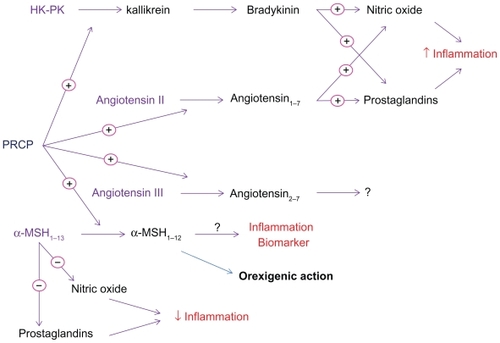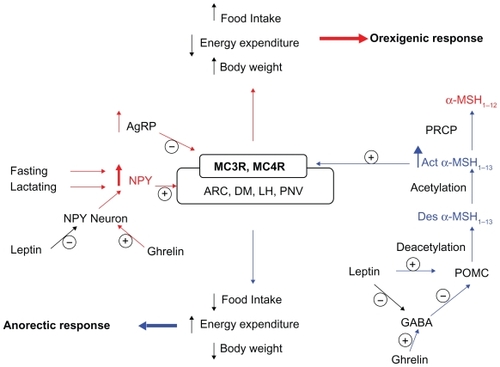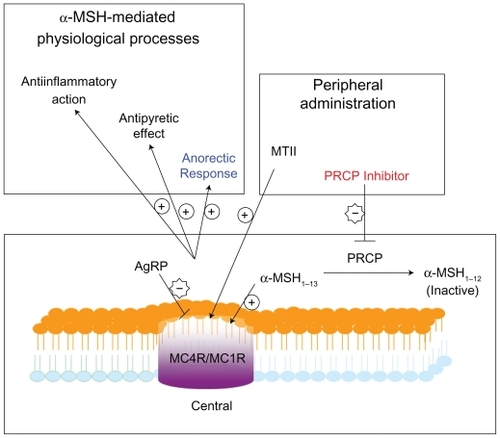Figures & data
Figure 1 The physiological action of prolylcarboxypeptidase (PRCP).
Abbreviations: α-MSH, α-melanocyte-stimulating hormone; HK high molecular weight kininogen; PK, prekallikrein.

Figure 2 The role of the hypothalamus in food intake and metabolism.
Abbreviations: Act-α-MSH, acetylated α-MSH; AgRP, Agouti-related protein; ARC, arcuate nucleus of the hypothalamus; Des-α-MSH, desacetyl α-MSH; DM, dorsomedial hypothalamus; GABA, gamma-aminobutryric acid; LH, lateral hypothalamus; MC3R, melanocortin-3 receptor; MC4R, melanocortin-4 receptor; NPY, neuropetide y; POMC, pro-opiomelanocortin; PVN, paraventricular nucleus.

Figure 3 Schematic structure of pro-opiomelanocortin (POMC) and location of melanocyte-stimulating hormones (MSH).

Figure 4 PRCP inhibitors provoke accumulation of α-MSH1–13 peptide leading to reduced body weight, inflammation, and pain.
